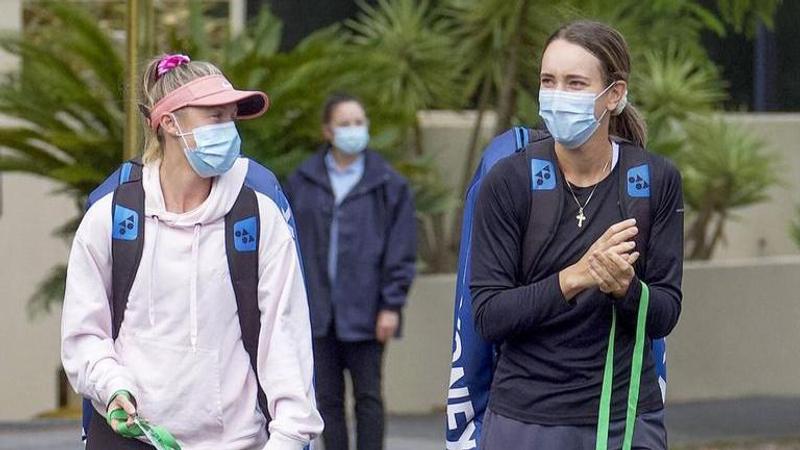Published 08:24 IST, January 19th 2021
3 more COVID-19 cases linked to Australian Open arrivals
Australian Open tournament director Craig Tiley has ruled out any change in the best-of-five set format for men’s singles matches at the season-opening tennis major as three more COVID-19 cases were reported among the international arrivals for the tournament

Australian Open tournament director Craig Tiley has ruled out any change in the best-of-five set format for men’s singles matches at the season-opening tennis major as three more COVID-19 cases were reported among the international arrivals for the tournament.
There are 72 players now in hard quarantine and unable to practice because of nine active coronavirus cases — an increase in three — among the incoming travelers to Melbourne. There was no immediate indication from health officials Tuesday that there would be any increase in the number of affected players.
In good news for players in lockdown, there were suggestions that some may be allowed to leave their rooms for practice before the 14-day hard quarantine period.
More than 1,200 players, coaches, staff, officials and media have arrived on 17 charter flights since last Thursday to prepare for the Australian Open, which starts Feb. 8. COVID-19 cases have been linked to three flights, from Abu Dhabi, Doha, Qatar and Los Angeles.
Victoria state Premier Daniel Andrews said some of the cases linked to the tournament will be reclassified as “non-infectious shedding,” potentially allowing changes for some players in lockdown.
“If you’ve got say 30 people who are deemed a close contact because they’ve been on a plane with a case, and the case is no longer an active case but a historic shedding, well that would release those people from that hard lockdown,” Andrews said.
Tiley, appearing on Nine Network television on Tuesday, rejected calls from some men’s players to reduce Australian Open matches to best-of-three sets instead of best of five.
“We’re a Grand Slam,” Tiley said. “Right now, three out of five sets for the men and two out of three sets for the women is the position we plan on sticking to.”
Some players have used social media to detail their perceived hardships of being in lockdown.
“These are high performing athletes and it is hard to keep a high performing athlete in a room,” Tiley said. “This is the contribution that they have to make in order to get the privilege of when they do come out to compete for $80 million (US$62 million) in prize money."
Tiley said the positive tests among some of the arriving players and officials were not a surprise.
“There was going to be an expectation to have several positive cases,” Tiley said. “But now we’re in a position where they’re in lockdown, designed to protect the community.”
Tiley defended Novak Djokovic for appealing to Australian Open organizers to ease restrictions in a list reported on Monday, including a request to shift as many players as possible in Melbourne to private residences with tennis courts.
Djokovic’s requests were quickly refused by Andrews.
“In the case of Novak, he wrote a note, these weren’t demands, they were suggestions,” Tiley said. “But he, too, is understanding what two weeks of lockdown means . . . every player coming down knew that if they were going to be close contacts or test positive that these were going to be the conditions.”
A smaller group of players who landed in the South Australia capital of Adelaide, including Serena Williams, Naomi Osaka, Novak Djokovic and Rafael Nadal, are also allowed outside for practice sessions under bio-secure protocols.
The season-opening Grand Slam event was delayed for three weeks because of the pandemic.
Australia’s international borders are mostly closed, although there are exemptions in special circumstances. All arrivals must do mandatory quarantine. Each of Australia’s states and territories has its own border and travel restrictions, and those can change on very short notice.
Victoria state, which has Melbourne as its capital, accounted for 810 of Australia’s 909 deaths from COVID-19, most of those during a deadly second wave three months ago which resulted in curfews and lockdowns for the city.
Image credits: AP
Updated 08:24 IST, January 19th 2021




